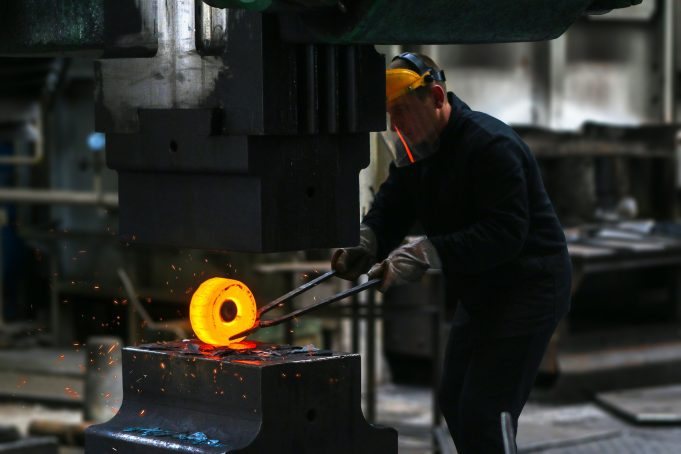Despite all of the problems, the manufacturing industry is predicted to grow in the next years. As a result, this industry needs manufacturing software to aid in their operations. In order to increase the price of a product, the manufacturing sector transforms raw materials into semi-finished or finished products. Manufacturing industry advancement is also driven by the development of more superior technologies, such as the utilization of manufacturing systems. Manufacturers, on the other hand, face a variety of internal obstacles. Manufacturing businesses can also get ISO Audit Services to improve their growth. Here are 6 common manufacturing sector issues, as well as strategies to solve them.
1. A lack of skilled workers
A shortage of skilled workers is one of the issues that manufacturing businesses encounter, from the largest manufacturing business to the most humble workshop. What is the problem? Young people have misconceptions about the sector, while older professionals are retiring. According to The Manufacturing Institute and Deloitte Consulting LLP, 22% of manufacturing workers will retire over the next ten years.
Solution
This does not have to be the case. You can take the lead and help unskilled workers in finding possibilities to become manufacturers.
2. Product Demand Forecasting
Many manufacturers still have problems estimating future demand today. The biggest issue is that they lack comprehensive reporting systems that allow them to forecast how many products they should sell in the next months or year. As a result, their products do not fulfill client demand, and their sales suffer.
Solution
To accurately predict client demand, manufacturers should use reliable reporting technologies that allow them to target sales and estimate how many and which things they should produce in the future. Manufacturers must examine external events in addition to using software to create accurate forecasts. Currency exchange rates, rising gas prices, current market trends, and so on are examples. Make sure that the sales and marketing teams are always up to date on these issues.
3. Inventory and project management
Inventory management and floor-level management will always be a problem on the shop floor as you try to fulfill orders amid the turmoil of running a business. You may believe that these components of manufacturing are unrelated. However, if you can’t keep track of your inventory, it will have a direct impact on your manufacturing and sales orders.
Solution
Other manufacturing companies have addressed inventory and production schedule issues by investing in a technology that can help you regulate these areas. Finding manufacturing ERP software to assist you automate your inventory management (we’ll discuss the challenges with automation later) and schedule your projects can help you drastically improve your fulfillment rate. This helps you to concentrate on growing your business rather than being burdened by management processes.
4. Improving Manufacturing Plant Efficiency
Manufacturers have been looking for efficient solutions to decrease costs and enhance efficiency at their factories up until now. Many of them prefer to sacrifice product quality in order to decrease manufacturing costs, but this simply reduces profitability since dissatisfied customers will quit purchasing from them.
Solution
Modernizing processes and systematizing workflows is one of the most efficient strategies to improve efficiency in manufacturing operations. Manufacturers must eliminate time-consuming and labor-intensive activities, reduce material waste, maximize equipment use by limiting damage, and simplify supply chains. ERP (Enterprise Resource Planning) solutions can help with all of these, allowing manufacturing to be more efficient.
5. Selling direct to consumer
Other industrial concerns associated with consumer trends include the issues associated with selling directly to customers. As more people shop online, manufacturing companies have been able to eliminate the middleman and offer their products directly to customers. Unfortunately, more power comes with more responsibility and risk.
Solution
You’ll need to find software that can help you centralize your whole organization because you’ll be handling everything, including marketing, supply chain management, production, and selling. To tackle the manufacturing challenges of comprehensive control, many manufacturing businesses resort to multichannel sales inventory production management software. This helps you in streamlining your manufacturing and managing your many sales channels.
6. Skilled Labor Shortage
While automation and robotics can help cover the labor gap, humans will still be required to assess and solve issues, as well as manage outputs. The manufacturing industry is suffering a manpower shortage as the baby boomer generation enters retirement. This is one of the most serious dangers to the manufacturing industry today.
Solution
Manufacturers must be creative in recruiting personnel by using multiple online channels to post job opportunities in order to combat the scarcity of competent workers. Producers must be extremely picky when hiring new personnel, ensuring that they can work quickly, on time, under pressure, and do not object to shifting work schedules. Furthermore, manufacturers must be able to give frequent training to both new and existing staff in order to maximize their potential. Manufacturers should think about using competency management software to fill workforce skill shortages.












